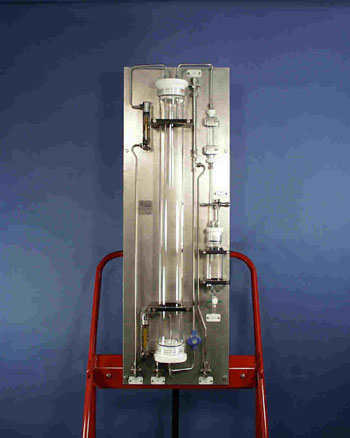
- 比利时StuvEX防爆与防火设备
- 美国RCS腐蚀产品监测设备
- 卢森堡ROTAREX罗达莱克斯灭火系...
- 意大利GM SISTEMI火花探测及...
- 西班牙ADIX安迪克斯抑制爆炸系统
- 备盈倍BS&B防爆**系统
- 贺尔碧格Newson Gale防爆静...
- 贺尔碧格hoerbiger防爆**系...
- 意大利Aircom爱科粉尘防爆设备
- 法国Stif斯缇福粉尘防爆设备
- 西班牙Adix安迪克斯隔爆阀抑制系统...
- 瑞士Rico瑞科爆炸隔离阀
- 意大利Control logic康洛...
- 意大利Control logic康洛...
- 意大利科恩除尘和防爆产品
- 美国Argus火花和金属探测以及回收...
- 美国Edwards爱德华消防报警系统
- 美国Kidde凯德厨房灭火和空气采样...
- 美国Marioff HI-FOG高压...
- 挪威纳斯克激光气体分析仪
- 德国Rembe认必泄压爆破片及隔离尘...
- 英国Amal阻火器
- 英国Marvac呼吸阀和紧急泄放阀以...
- 英国Marston防爆板和爆破片
- 美国ZOOK防爆板
- 瑞士Rico-Ventex隔爆阀
- 德国GreCon格雷康火花探测器以及...
- 德国Eltex埃尔特克斯防爆静电接地...
- 美国迪康气体检测设备
- 美国PAC实验室和在线分析仪器
- 奥德姆/安姆特仪器产品
- 美盛环境监测行业成套系统工程
- 美盛流体污染控制,过滤,分离净化产品
- 美国Norman不锈钢高压过滤器
- 美国施罗德过滤器以及过滤系统
- 韩国杜科给水设备以及泵系统
- 美国Cameron卡麦龙过程控制和阀...
- 美国BARTON测量仪器仪表
- 美国NUFLO仪表产品
- 美国clif mock采样设备和系统
- Caldon超声波技术产品
- 美国Cameron/Barton卡麦...
- 美国Pentail滨特尔油液净化设备...
- 韩国雷尊泰克REZONTECH火焰探...
- 韩国CSA Bestouch火焰探测...
- 科马特泰克色谱技术产品
- 英国爱丁堡Edinburgh ins...
- 欧美Cerex/AquaRead等进...
- 欧文凯利自控阀设备
- 德尔格Draeger**检测设备
- 美国Det-tronics火焰探测器...
- 泵阀控制
- 美国Honeywell生命**产品
- 密析尔湿度和露点仪表
- 美国TIF公司卤素检漏仪
- 美国Teledyne Analyti...
- 美国泰科SCOTT健康和**
- 日本日置HIOKI电测产品
- 英国梅克罗尼(MICRONICS)超...
- 美国AII氧分析仪
一个难以测量,使其在排放控制域是逃犯挥发性物质,通常水电碳,从冷却塔水逸出,这种测量是必要的,不仅让植物,以符合法律的限制,而且这样的排放,因为在冷却塔水的一些材料,有时突然出现的过程中泄漏的指标。
Portable Cooling Water Sampler

One difficult measurement to make in the domain of emissions control is that of fugitive volatile material, usually hydro carbonaceous, escaping from cooling tower water. Such measurements are necessary not only to allow plants to conform to laws limiting such emissions but also because sudden appearances of some materials in the cooling tower water are sometimes indicative of process leaks. The root of the analytical problem is that it is difficult to sample water in the field then to analyze it in the laboratory without some loss of the volatile material. Compounding the problem is the fact that the measurement of interest is the amount of material that volatilizes while the water is in the cooling tower. This measurement may not necessarily coincide with the total carbon in the water since some of it may be nonvolatile. Described herein is a sampling device, built specifically for use in the field, that can measure the volatile organic carbon content of cooling tower water.
Description:
The main vessel is a thick walled glass pipe thirty-six inches in length and three inches in diameter. It is packed by the end user to a depth of twenty six inches with 1/4" beryl saddles. All the lines to and from the main vessel are 1/4" stainless steel tubing, except 1/4" PFA tubing joining dryer and Erlenmeyer flask. The ends of the main vessel are sealed with threaded Teflon stoppers of the appropriate size. Gas exiting the main tube is passed through a glass tube, six inches long and one inch in diameter, packed with indicating Drierite furnished by the end user. This attachment dehumidifies the air stream with little or no absorption of hydrocarbon. The dried air the flows into a 250ml Erlenmeyer flask into which the probe of a detector (TLV Sniffer, Bacharach Instrument Company) has been sealed. Excess air not sucked into the Sniffer probe is vented through a bubbler which serves to indicate that such sufficient flow has been established. Water and air are metered into the system through rotometers.
Operation:
Before each series of runs, the Sniffer is calibrated by having a commercially available air-hydrocarbon mixture of know composition pass first through the drying tube then into the flask housing the probe where it is analyzed. Best results are obtained when the Sniffer has been allowed to warm up at least thirty minutes prior to calibration. Periodically the rotometers used to measure the air and water flow should be recalibrated. The air rotometer is calibrated on the volume of air delivered at ambient temperature and pressure, and the water rotometer is calibrated on water volume at ambient temperature. The ultimate accuracy of measurements made by this apparatus depends on the accuracy of these calibrations.
The initially empty apparatus is filled by having cooling tower water fed to it at a measured rate until the packing is just submerged. At that time the drain valve is opened just enough to maintain that water level. Then air from either a cylinder or a portable pump is bubbled through the packing from the bottom at a measured rate. In practice, we found that an air : water volume ration of 20:1 gives the best results. Since the Sniffer requires 2500 ml of air per minute, we routinely set the air flow slightly above 2500 ml per minute and the water flow at 125 ml per minute.
The Sniffer is read after the air and water streams have flowed at least ten minutes. The concentration of hydrocarbon in the water is calculated according to Equation 1:C=MPbc/RTa
C = weight ppm of hydrocarbon in the cooling water
M = molecular weight of the hydrocarbon, g/mol
P = pressure of air in the main tube in the atmospheres
a = water flow, ml/min
b = air flow, ml/min
c = volume ppm of hydrocarbon in the air (Sniffer reading)
R = 82.054 ml-atm/mol-K
T = temperature in kelvins
If M is not known precisely, or if the volatile material is a mixture, a convenient number can be substituted to yield reasonable results.
